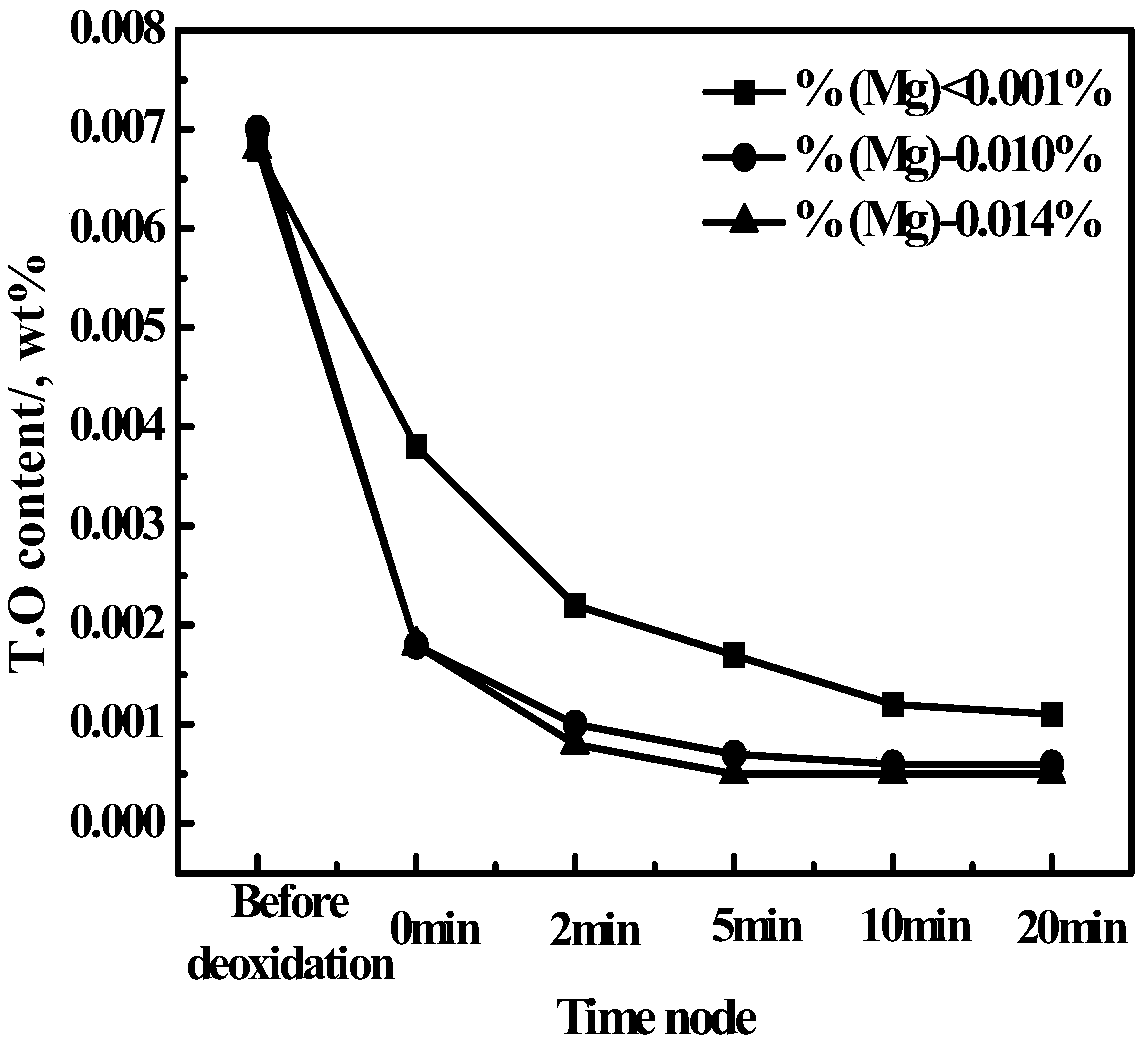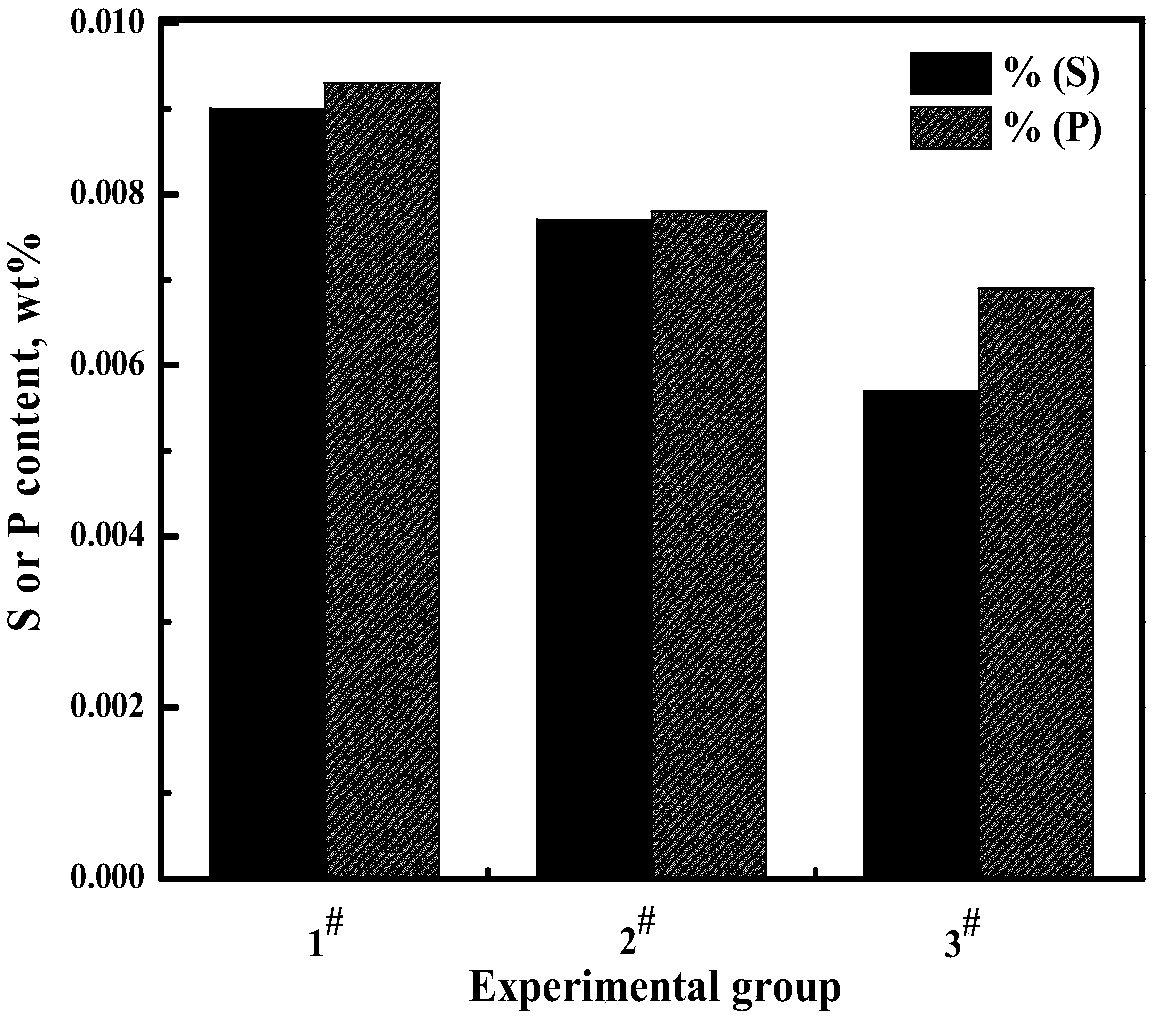A method for improving the recovery rate of magnesium element in molten steel
A technology of magnesium element and recovery rate, applied in the field of metallurgy, can solve problems such as the inability to effectively increase the magnesium content of molten steel, reduce the original input amount of alloy, and violent tumbling of molten steel, and achieve grain refinement, improve wear resistance, and mesh The effect of carbide reduction
- Summary
- Abstract
- Description
- Claims
- Application Information
AI Technical Summary
Problems solved by technology
Method used
Image
Examples
Embodiment 1
[0030] A method for improving the yield of magnesium element in molten steel comprises the following steps:
[0031] a. First, iron powder and nickel powder are mixed with magnesium powder at a ratio of 1:4, and die-cast into small blocks, in which magnesium accounts for 6% of the alloy.
[0032] b. Put the smelting raw materials into the MgO crucible of the pressurized induction furnace, the raw materials include industrial pure iron, industrial silicon, metal manganese, metal chromium, metal molybdenum and ferrovanadium;
[0033] c. Start the external air extraction system to vacuum the system, and control the vacuum degree within 10Pa;
[0034] d. After all the smelting raw materials are melted, argon gas is introduced, pressurized to 0.5MPa, and then the pre-treated Fe-Ni-Mg alloy in a is added in batches from the feeding port of the silo, and each addition does not exceed 25g , the amount of Fe-Ni-Mg alloy added per ton of molten steel is 13kg;
[0035] e. After holding...
Embodiment 2
[0038] A method for improving the yield of magnesium element in molten steel comprises the following steps:
[0039] a. First, iron powder and nickel powder are mixed with magnesium powder at a ratio of 1:1, and die-cast into small pieces, in which magnesium accounts for 4% of the alloy.
[0040] b. Put the smelting raw materials into the MgO crucible of the pressurized induction furnace, the raw materials include industrial pure iron, industrial silicon, metal manganese, metal chromium, metal molybdenum and ferrovanadium;
[0041] c. Start the external pumping system, vacuum the system, control the vacuum within 10Pa, and then pass in argon to pressurize to 1.0MPa;
[0042] d. After the smelting raw materials are melted, argon gas is introduced, pressurized to 1.0MPa, and then the Fe-Ni-Mg alloy pre-treated in a is added in batches from the feeding port of the silo, each time adding no more than 25g, each The amount of Fe-Ni-Mg alloy added per ton of molten steel is 16kg;
...
Embodiment 3
[0046] A method for improving the yield of magnesium element in molten steel comprises the following steps:
[0047] a. Mix iron powder and nickel powder with magnesium powder at a ratio of 1:1, and die cast into small pieces, in which magnesium accounts for 4% of the alloy.
[0048] b. Put the smelting raw materials into the MgO crucible of the pressurized induction furnace, the raw materials include industrial pure iron, industrial silicon, metal manganese, metal chromium, metal molybdenum and ferrovanadium;
[0049] c. Start the external pumping system, vacuum the system, control the vacuum within 10Pa, and then pass in argon to pressurize to 2.0MPa;
[0050] d. After the smelting raw materials are melted, argon gas is introduced, and the pressure is increased to 2.0MPa, and then the pre-treated Fe-Ni-Mg alloy in a is added in batches from the feeding port of the silo, and each addition does not exceed 25g. The amount of Fe-Ni-Mg alloy added per ton of molten steel is 16kg...
PUM
 Login to View More
Login to View More Abstract
Description
Claims
Application Information
 Login to View More
Login to View More - R&D
- Intellectual Property
- Life Sciences
- Materials
- Tech Scout
- Unparalleled Data Quality
- Higher Quality Content
- 60% Fewer Hallucinations
Browse by: Latest US Patents, China's latest patents, Technical Efficacy Thesaurus, Application Domain, Technology Topic, Popular Technical Reports.
© 2025 PatSnap. All rights reserved.Legal|Privacy policy|Modern Slavery Act Transparency Statement|Sitemap|About US| Contact US: help@patsnap.com



